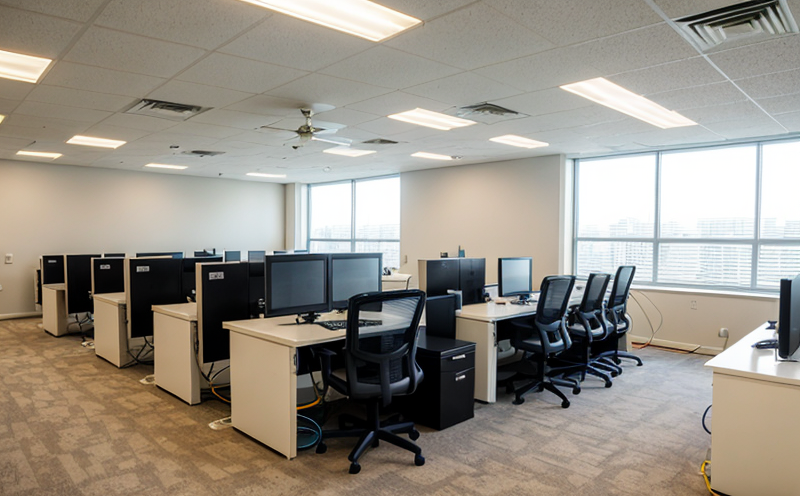ASTM E903 Solar Reflectance Testing of Lighting Materials for Energy Efficiency
The ASTM E903 standard is a critical tool in the evaluation of lighting materials, particularly those intended to improve energy efficiency. This testing method focuses on determining the solar reflectance index (SRI) or solar reflectance of various materials used in architectural applications such as roofing membranes, building facades, and other exterior surfaces that interact with sunlight.
The primary goal of ASTM E903 is to assess how much visible light a material reflects back into the environment. Reflecting more sunlight translates directly to reduced heat gain within buildings, leading to lower cooling costs and increased energy efficiency. This service ensures compliance with various regulations aimed at reducing building energy consumption, including those set by LEED (Leadership in Energy and Environmental Design) certification programs.
To conduct ASTM E903 testing accurately, our laboratory uses advanced spectrophotometric instruments capable of measuring the spectral reflectance across a wide range of wavelengths. Specimens are carefully prepared according to ASTM standards, ensuring consistency throughout all tests. Once measured, these data points contribute to calculating both the SRI and solar reflectance values.
Our team has extensive experience in this area, allowing us to provide precise results that meet or exceed industry expectations. By choosing our service for ASTM E903 testing, you can rest assured knowing your products will be evaluated against internationally recognized guidelines ensuring they perform as intended while contributing positively towards global sustainability goals.
Benefits of ASTM E903 Solar Reflectance Testing
The benefits of conducting ASTM E903 solar reflectance testing extend beyond mere compliance; they encompass broader advantages for businesses and the environment alike:
- Enhanced Energy Efficiency: By reflecting more sunlight away from buildings, materials tested under this standard help reduce HVAC loads thereby saving energy.
- Sustainability Compliance: Products that pass ASTM E903 testing contribute to sustainable design initiatives, supporting efforts towards green building certifications like LEED and WELL standards.
- Achieving Market Advantage: Demonstrating compliance with this widely recognized standard can give your product a competitive edge in the market place.
- Informed Decision-Making: Accurate solar reflectance data allows manufacturers to make informed decisions regarding material selection and formulation optimization.
The combination of these benefits makes ASTM E903 testing not just an essential part of product development but also a key component in achieving long-term business success through sustainable practices.
Environmental and Sustainability Contributions
The importance of ASTM E903 solar reflectance testing cannot be overstated when discussing environmental impact. Reflective materials play a crucial role in mitigating urban heat island effects by reducing the amount of absorbed solar radiation, which subsequently decreases the temperature difference between urban areas and rural regions.
By incorporating high-solar-reflectance materials into construction projects, we contribute to lowering greenhouse gas emissions associated with air conditioning use. This aligns perfectly with broader environmental goals such as those outlined in the Paris Agreement or regional initiatives targeting carbon footprint reduction. Furthermore, compliant products can aid in meeting national energy codes and standards designed to promote efficient building practices.
Through rigorous testing according to ASTM E903 guidelines, we ensure that every product entering the market meets stringent criteria for performance and reliability. This commitment supports both immediate operational efficiencies within buildings as well as long-term environmental benefits contributing positively to our collective sustainability efforts.
Use Cases and Application Examples
- Architectural Roofing Membranes: Ensuring that roof materials have appropriate reflectance properties helps maintain interior temperatures during summer months, reducing cooling requirements.
- Building Facades: Exterior wall coatings and cladding systems benefit significantly from high solar reflectance values to minimize heat absorption and enhance thermal comfort inside.
- Sidewalks and Pavements: Urban planning often includes reflective surfaces on walkways and streets to help manage urban temperatures effectively.
- Greenhouse Covers: Reflective greenhouses can increase crop yields by controlling the amount of light reaching plants, preventing overheating during hot periods.
Incorporating reflectance testing into product development processes ensures that these applications achieve optimal performance under real-world conditions, promoting both efficiency and sustainability across multiple sectors.





